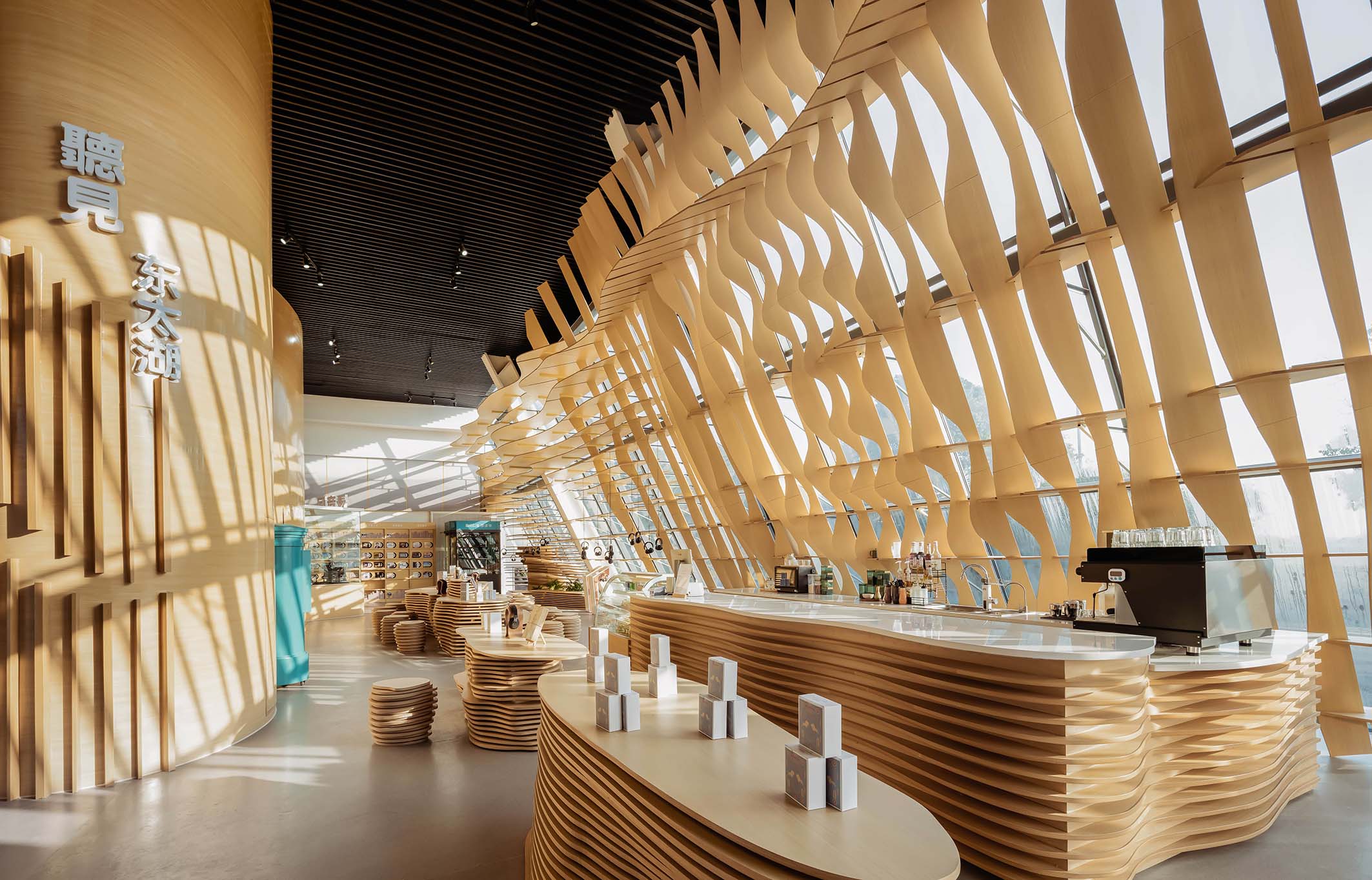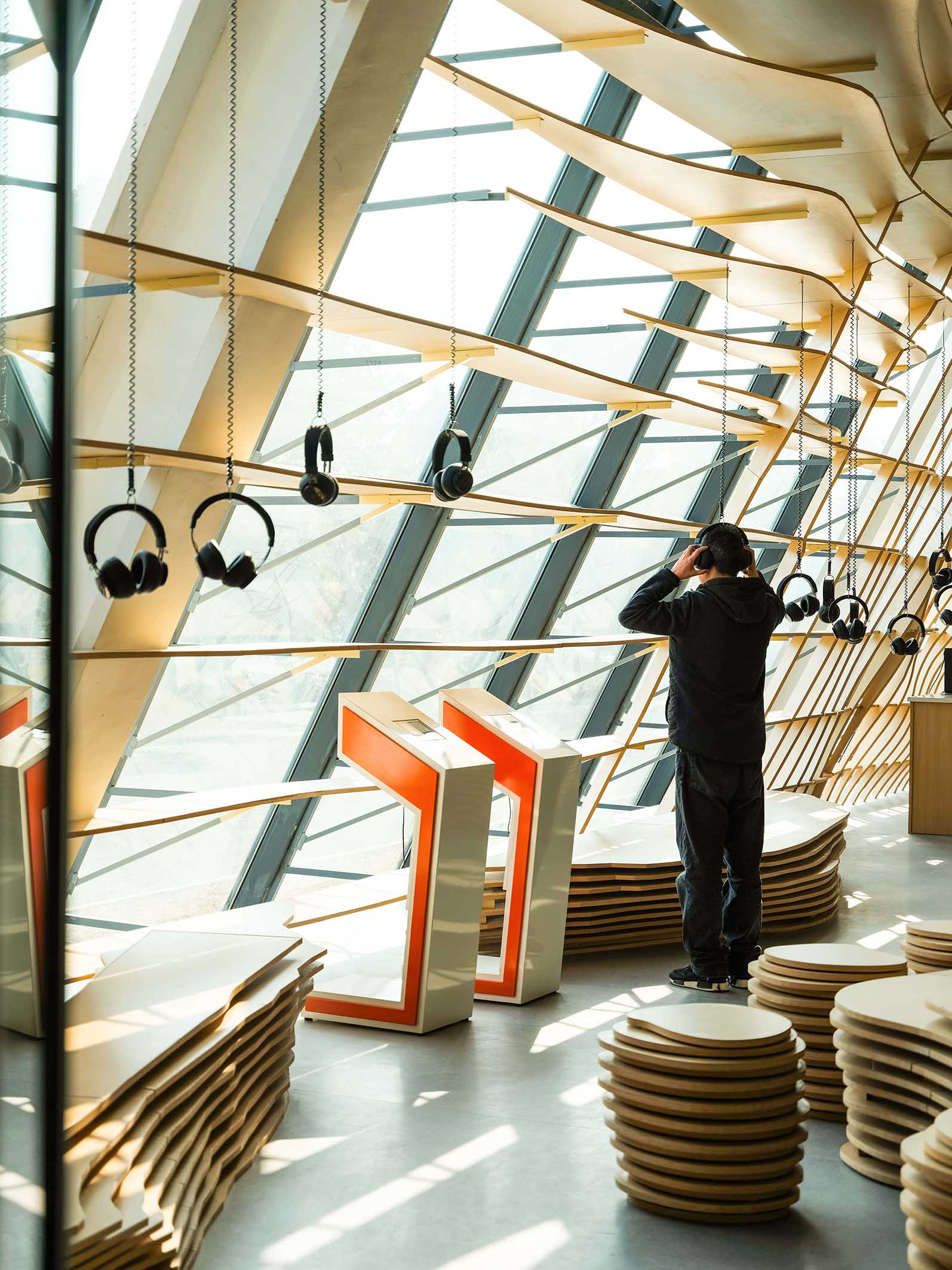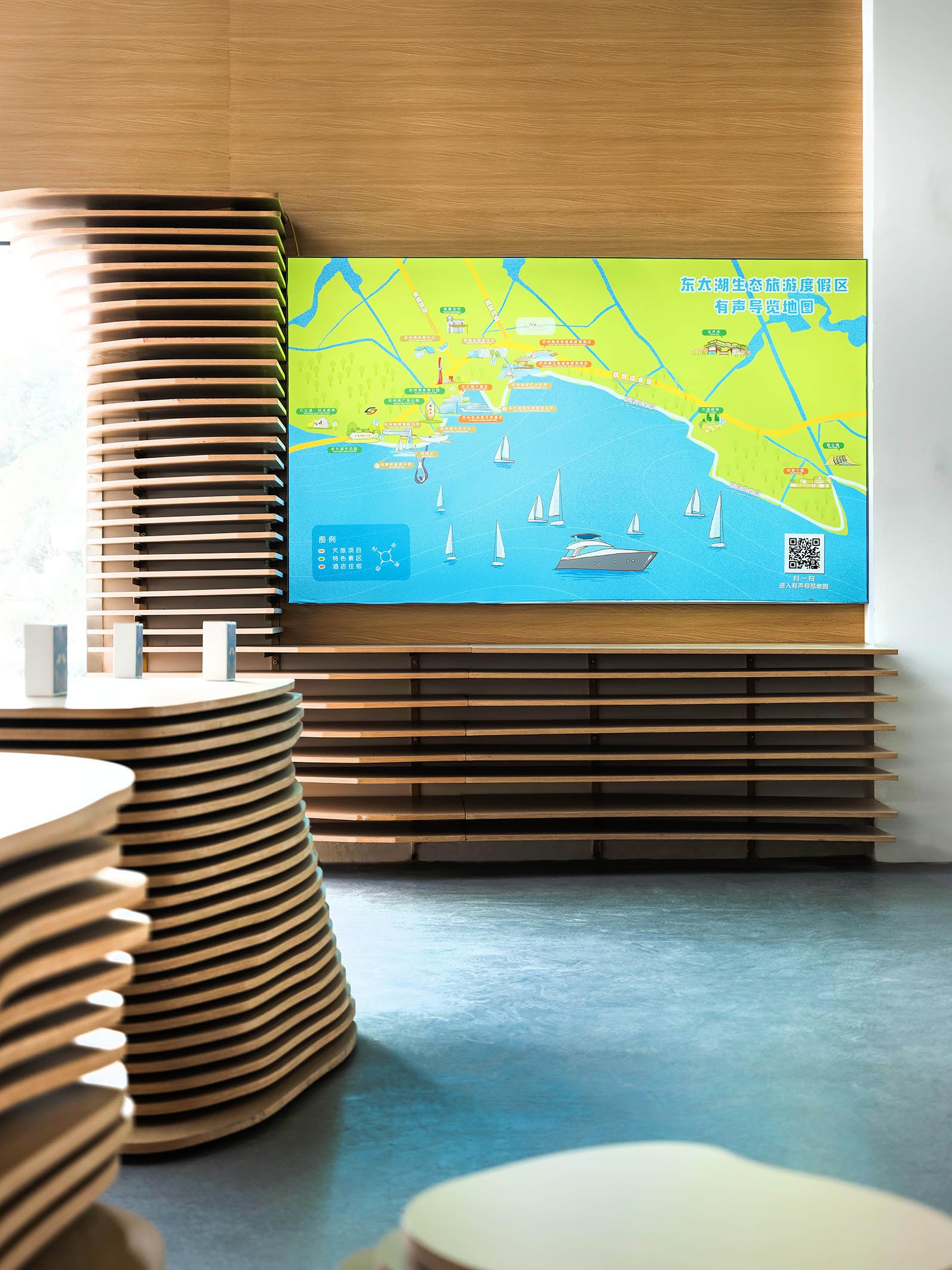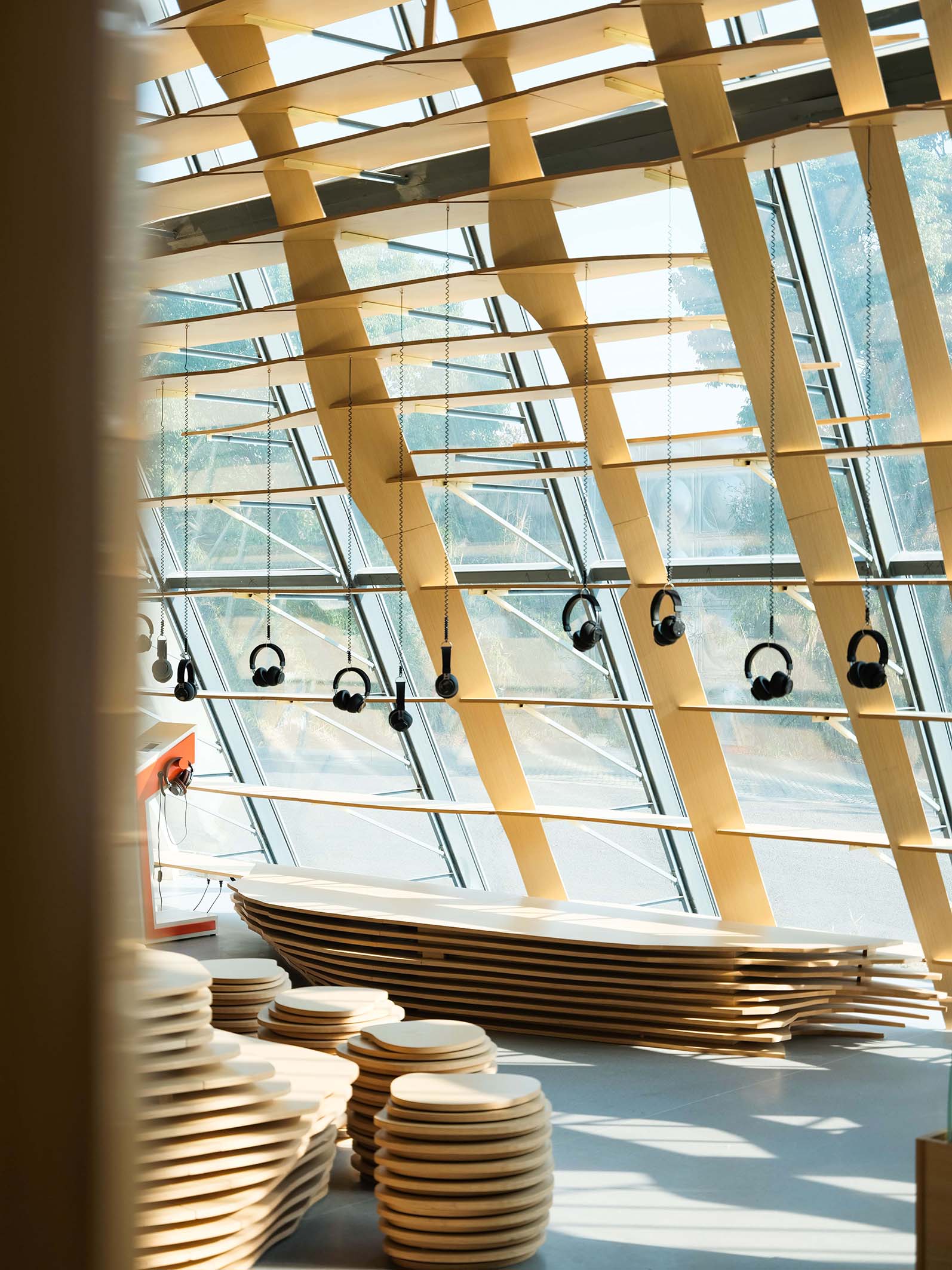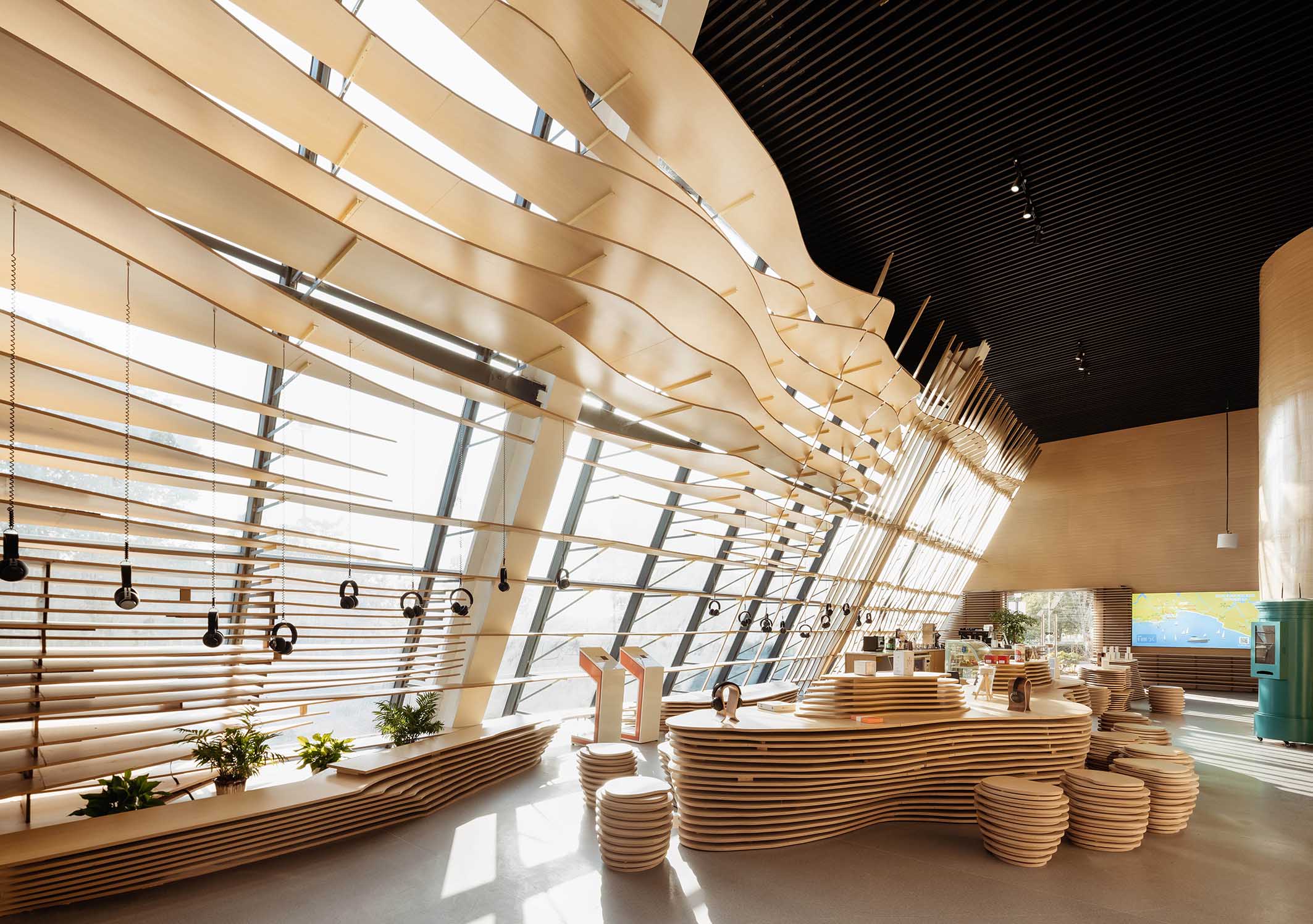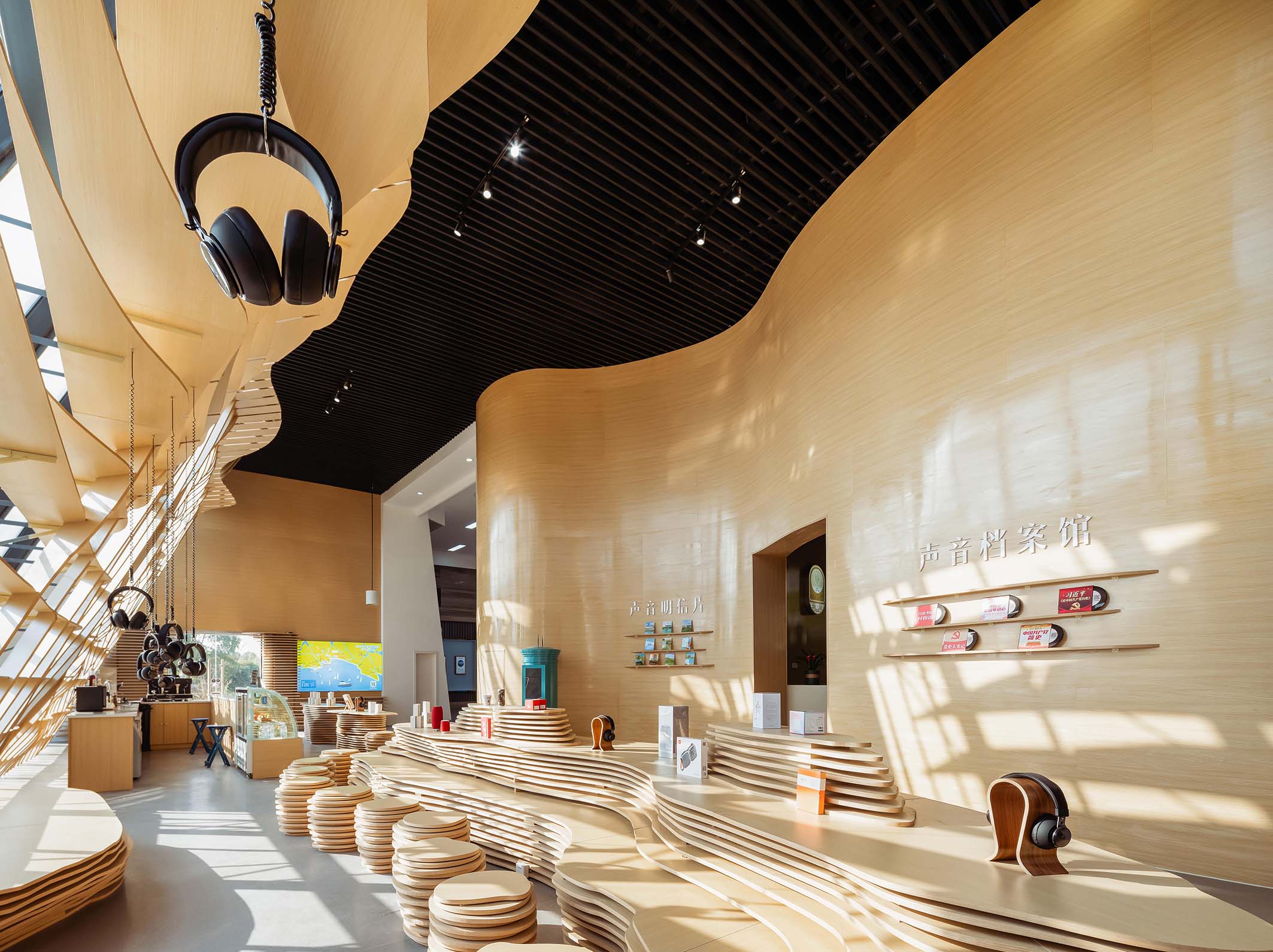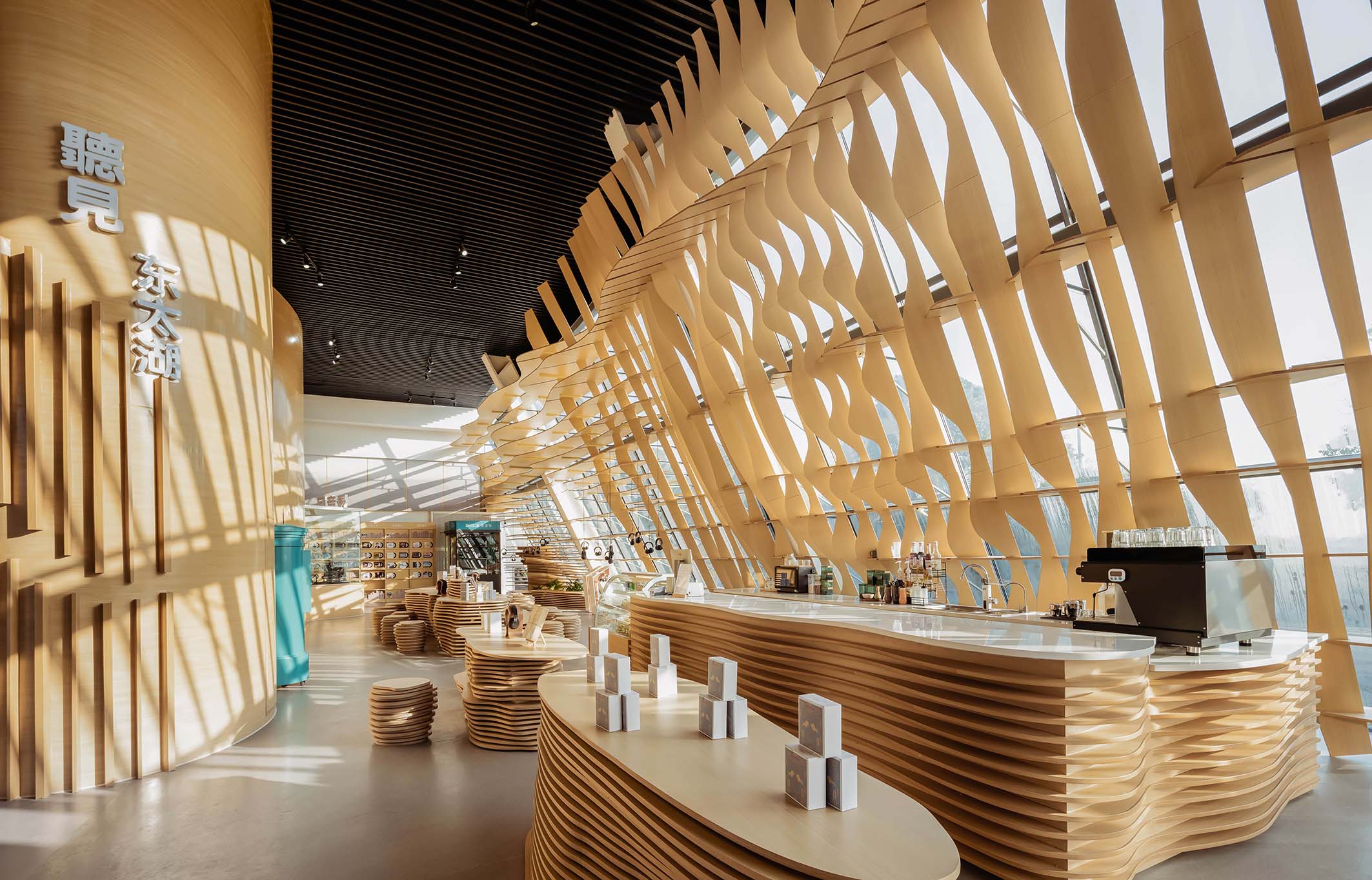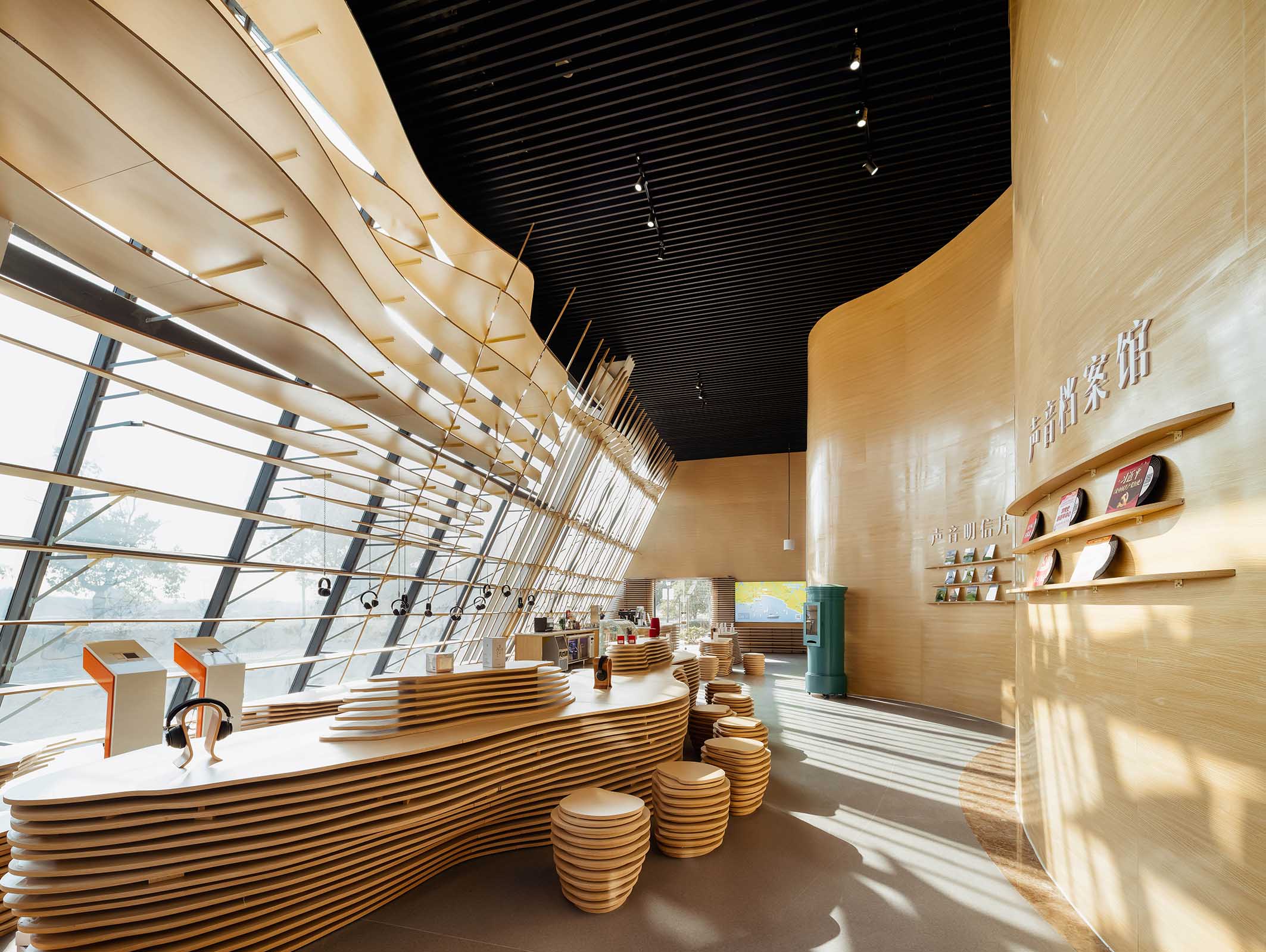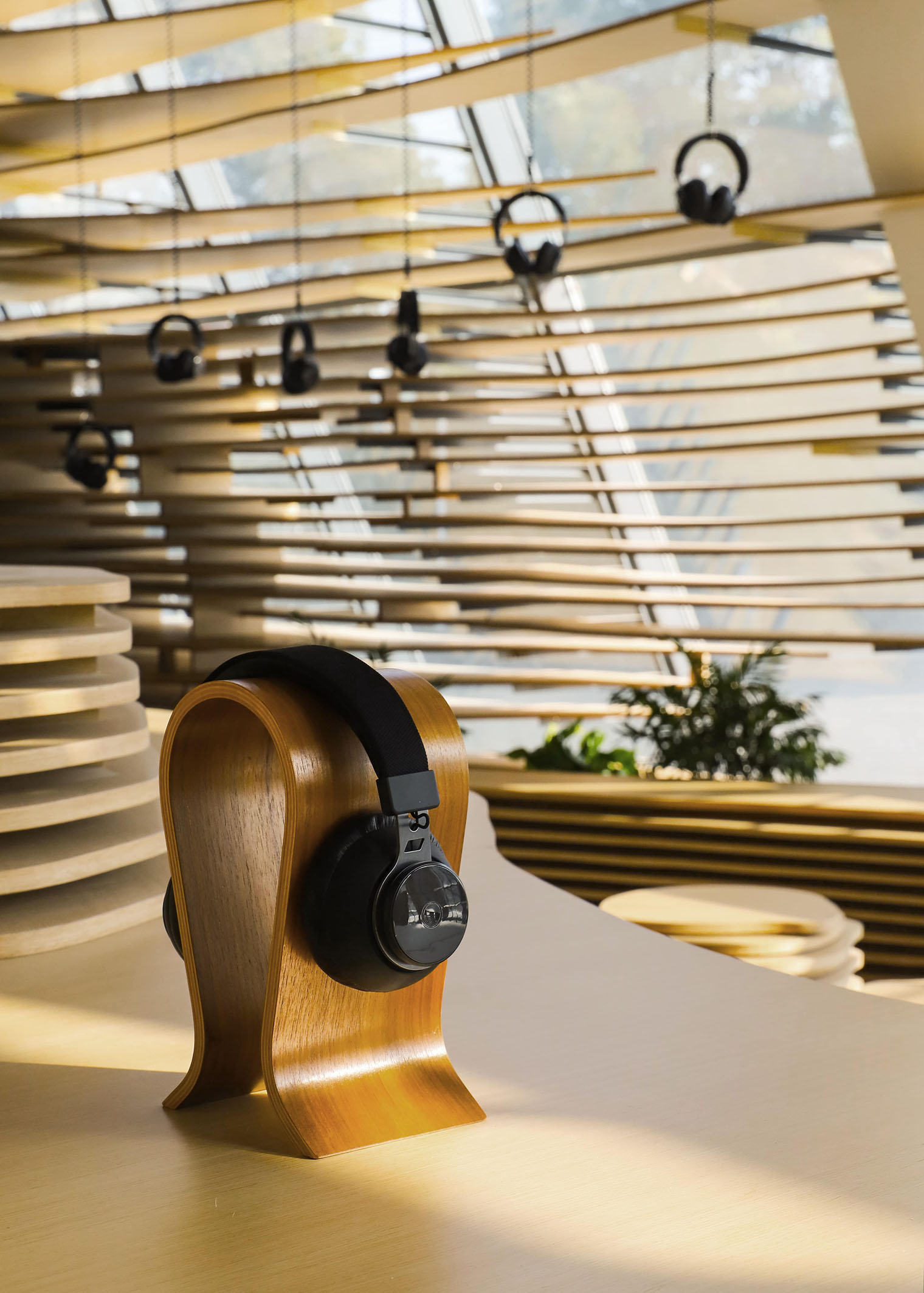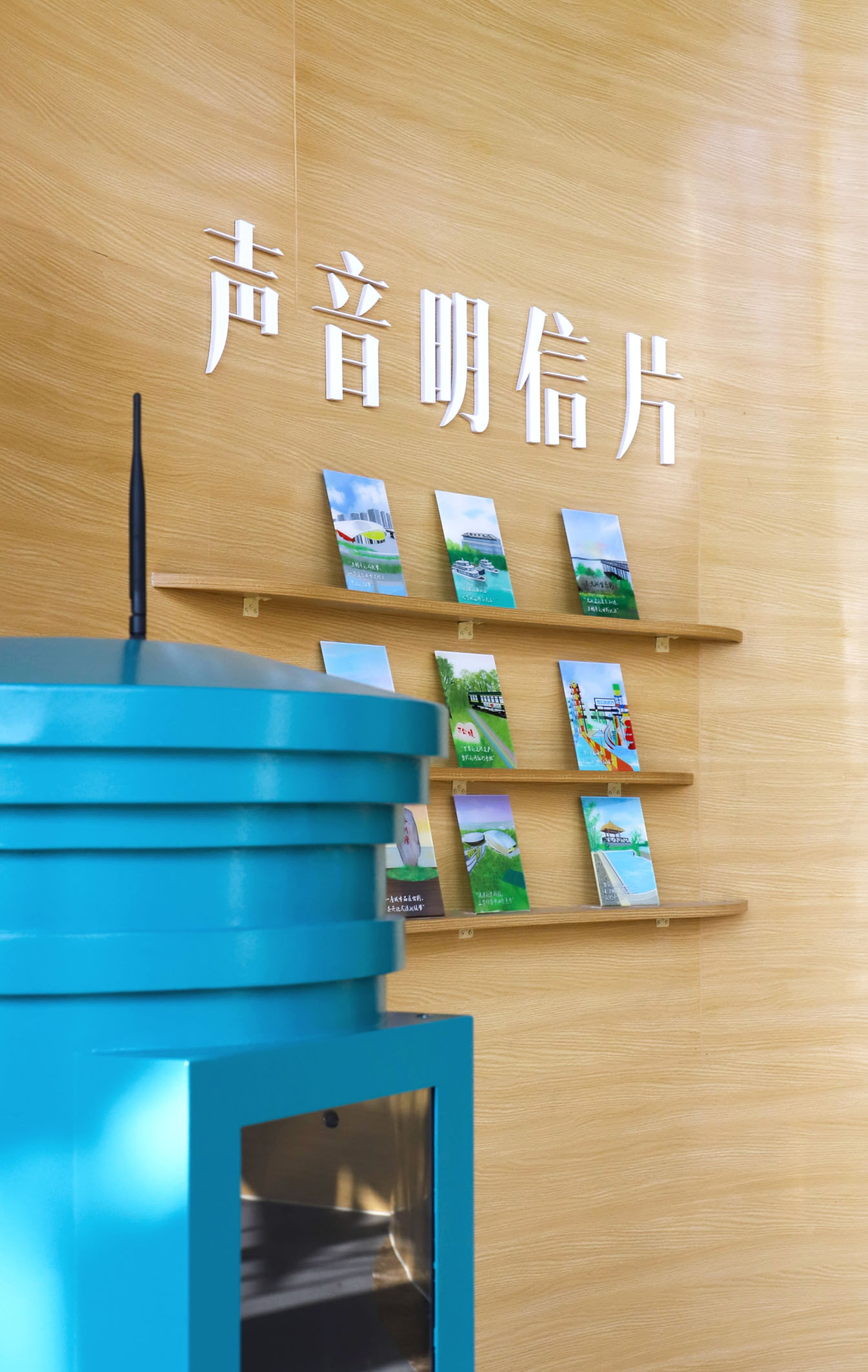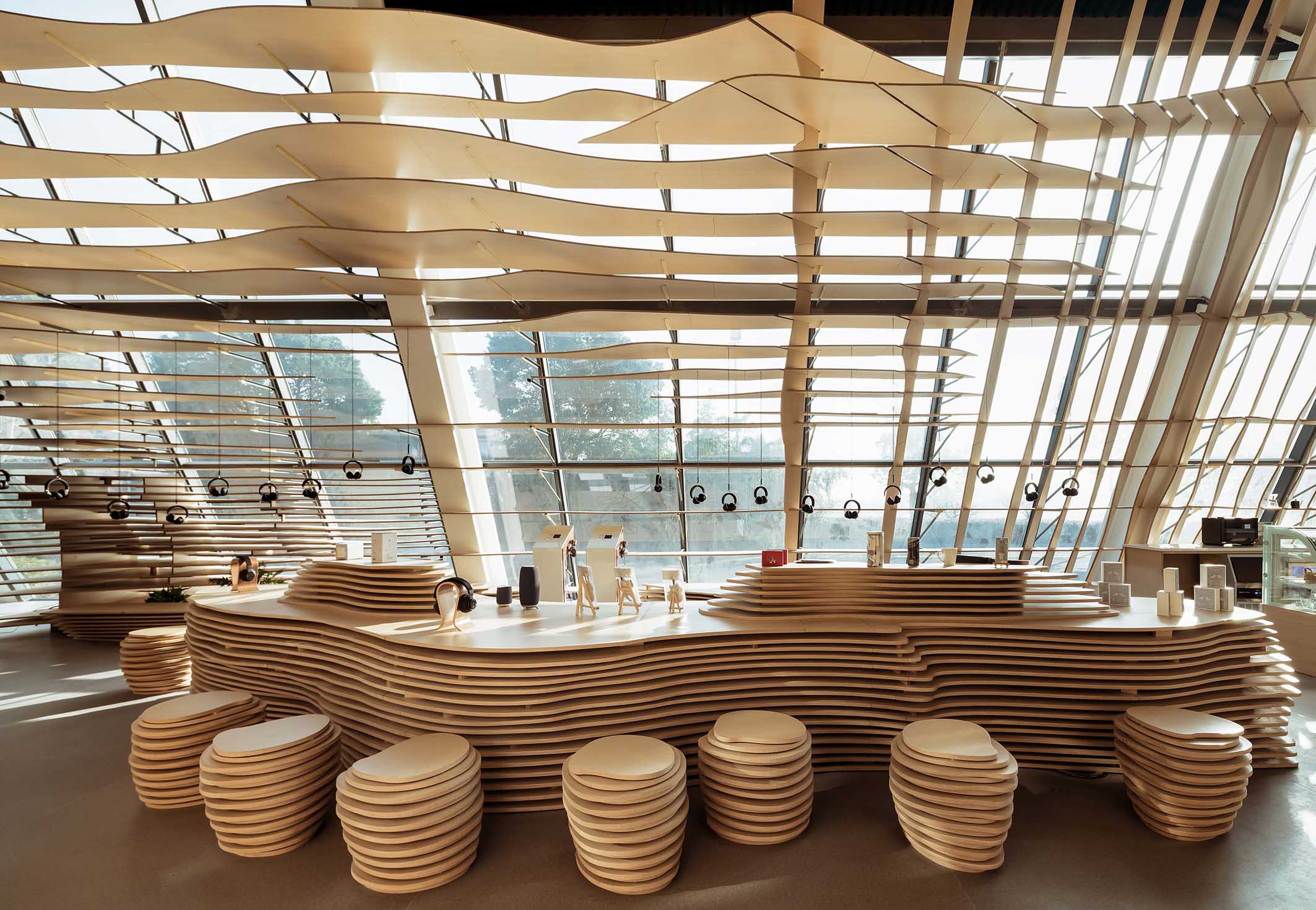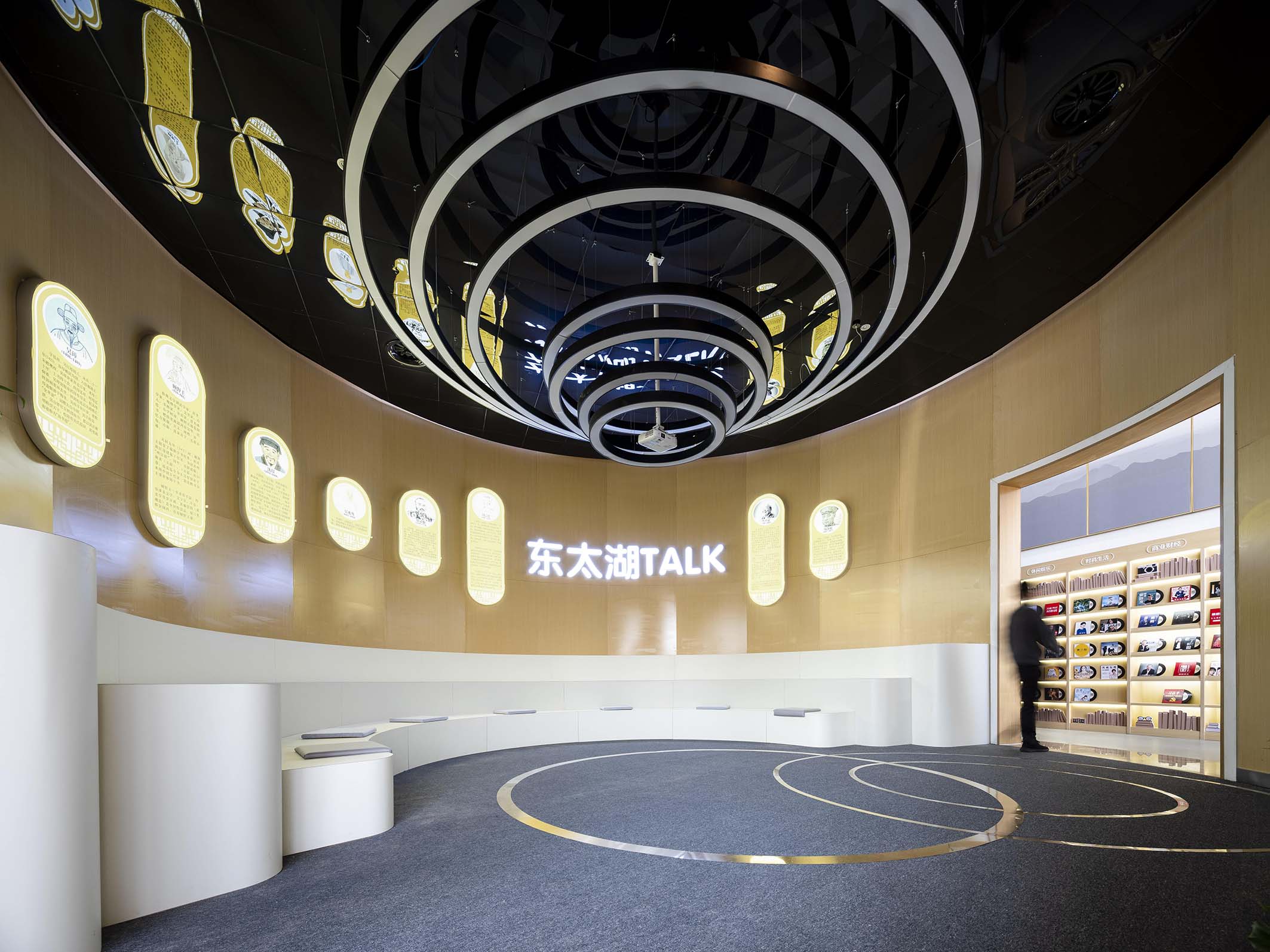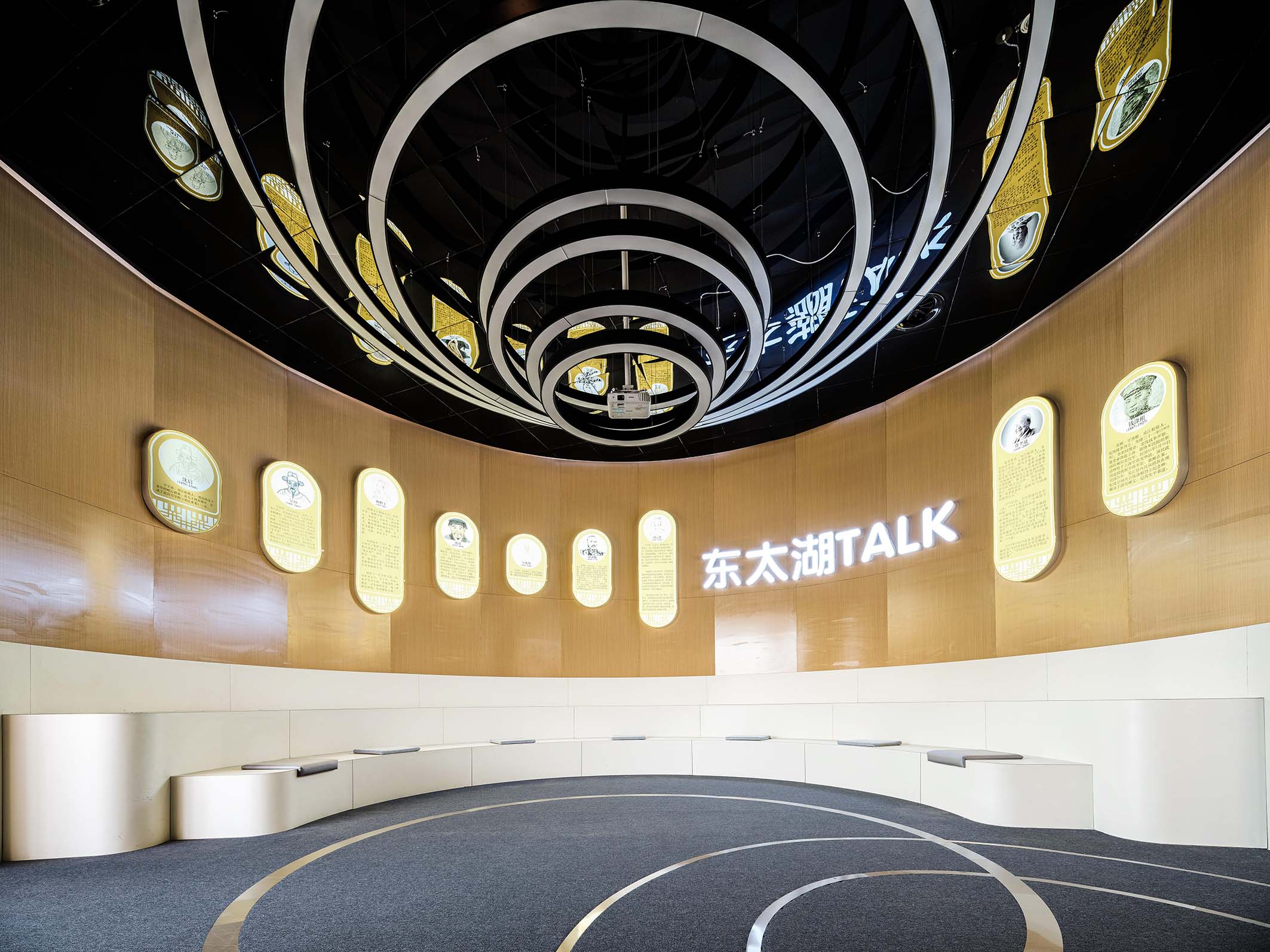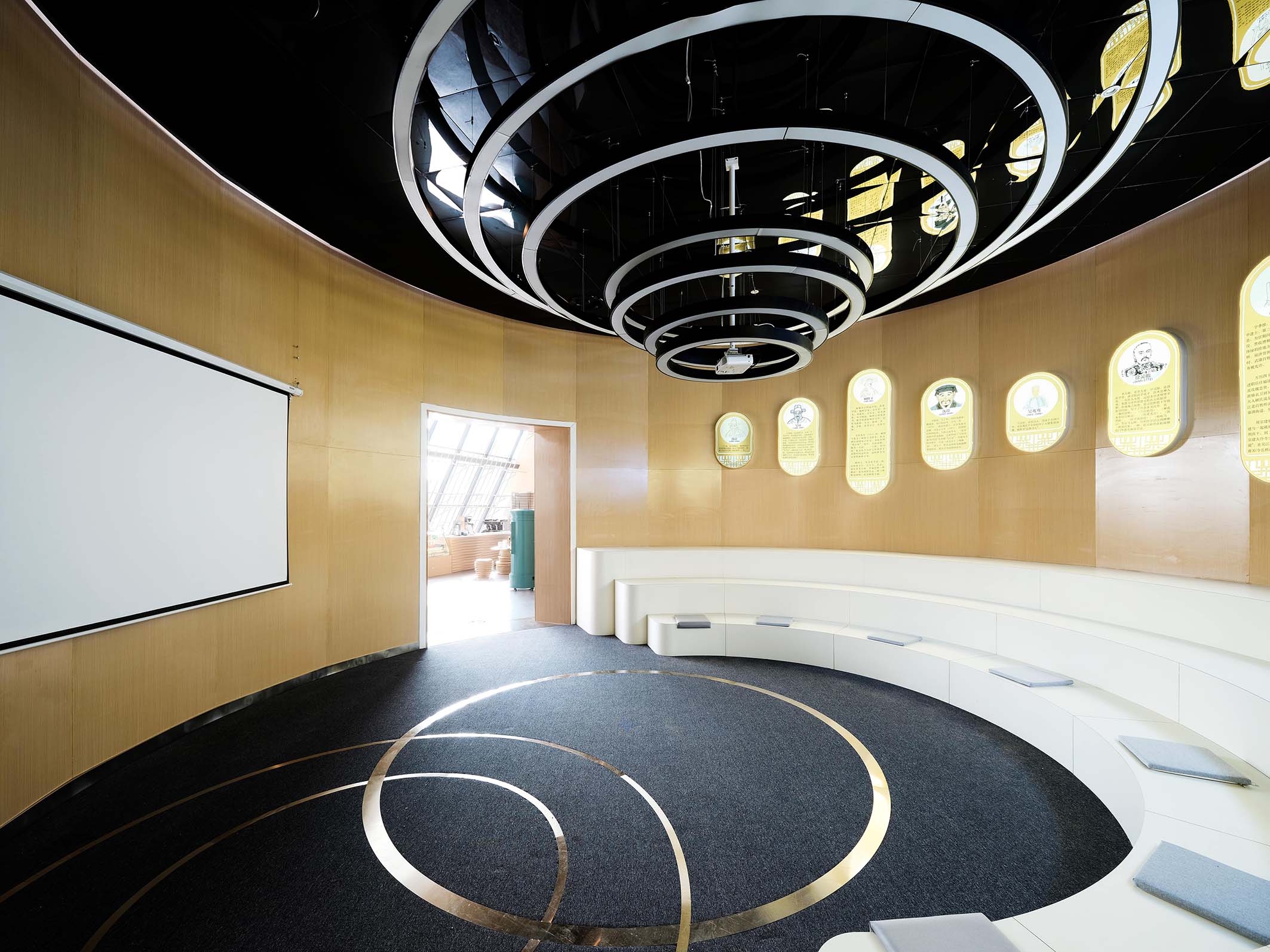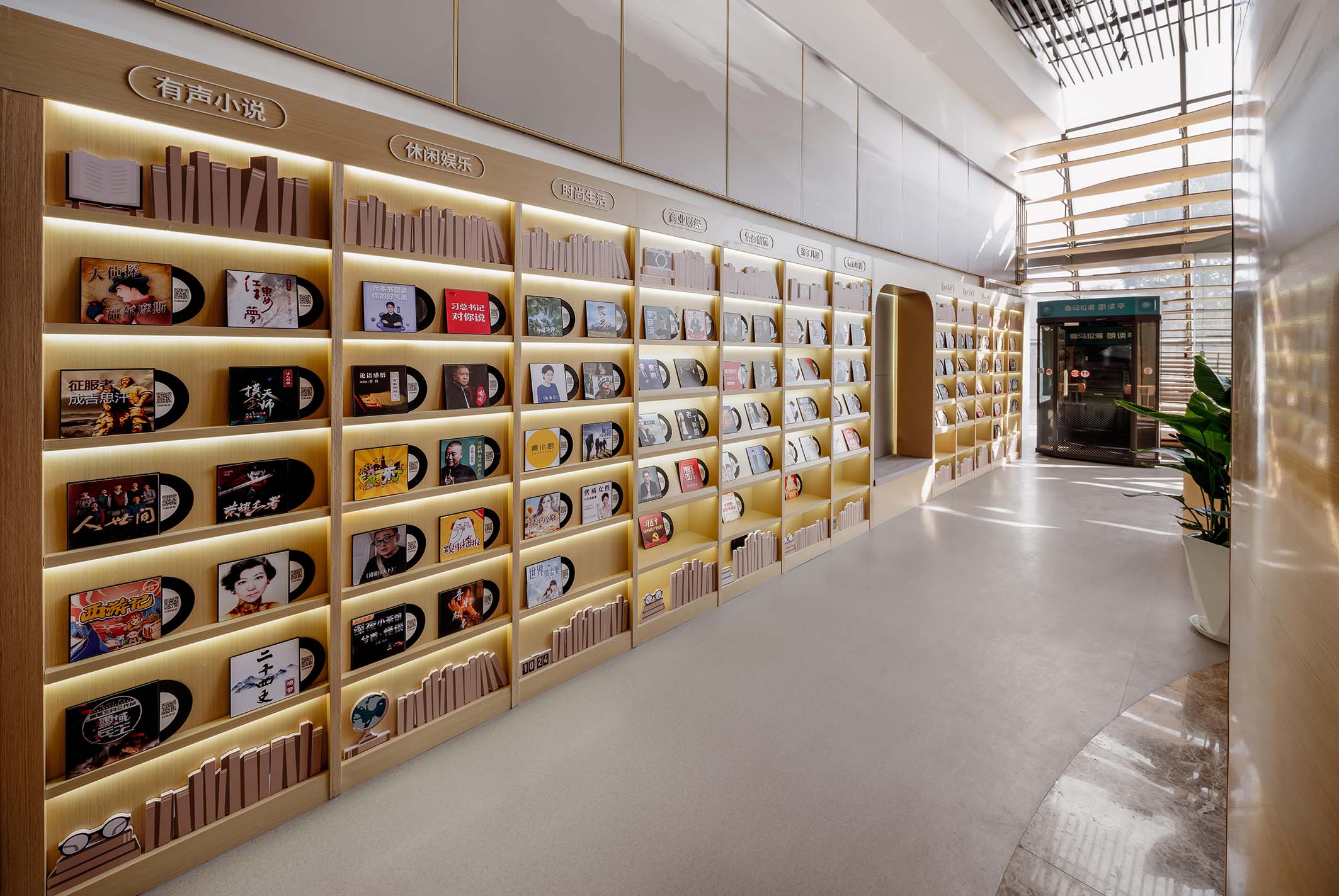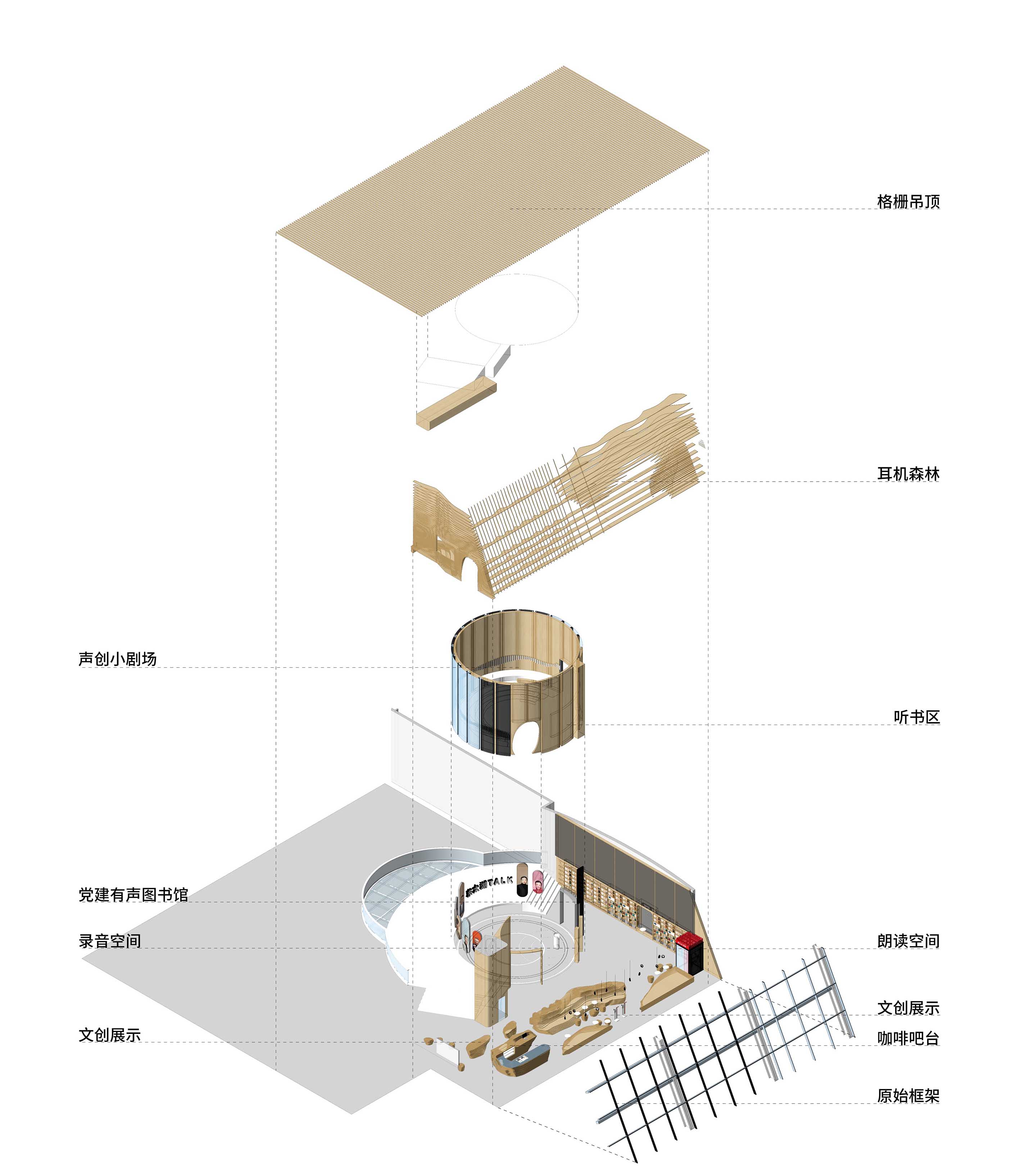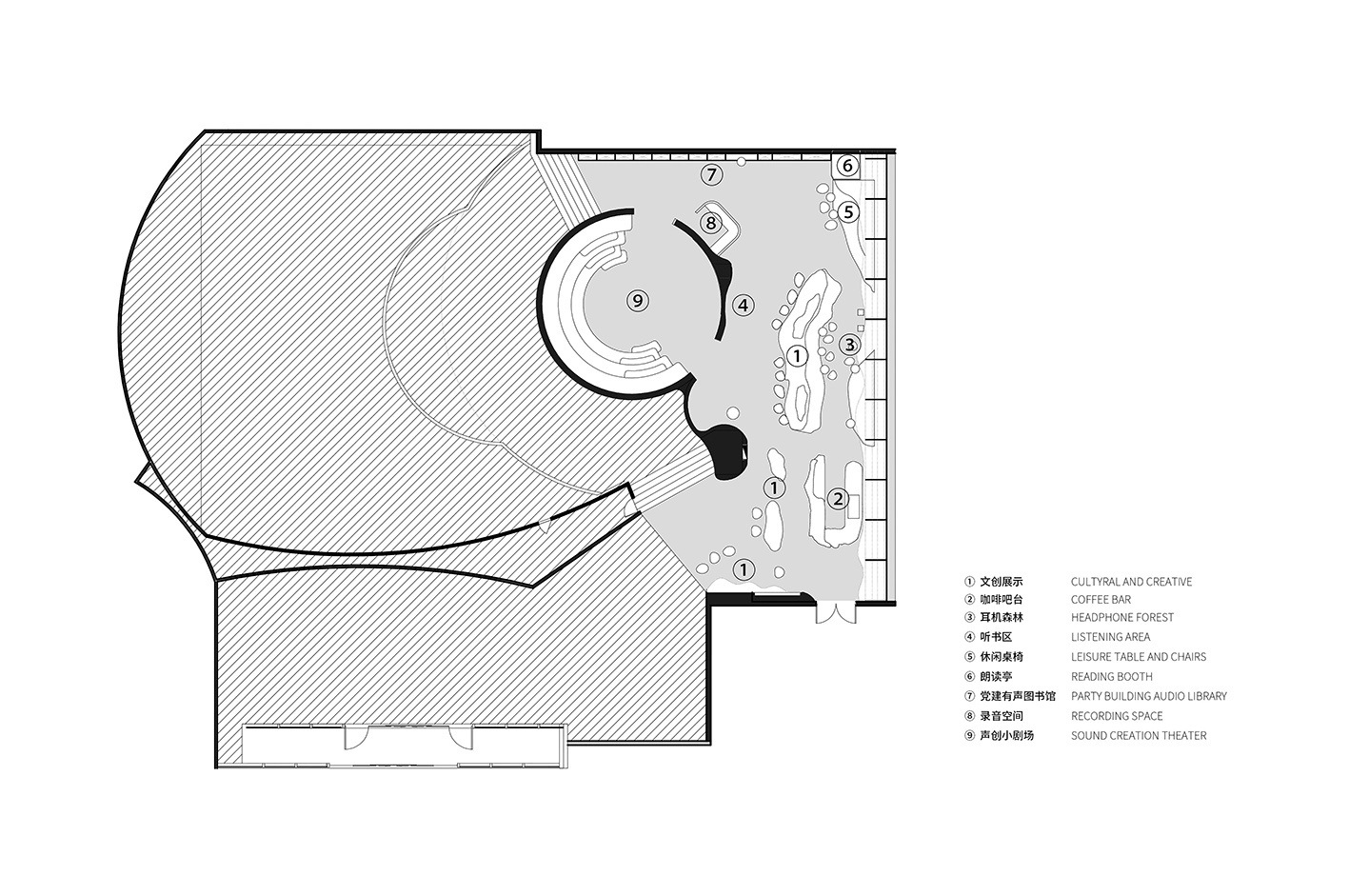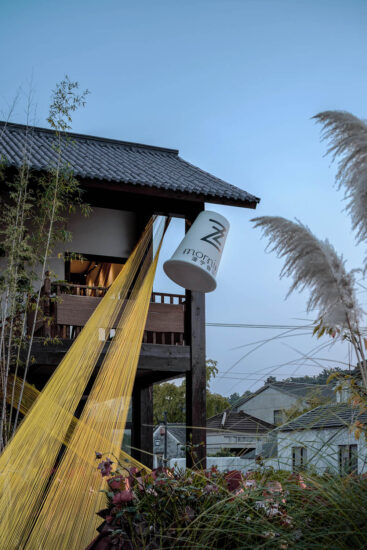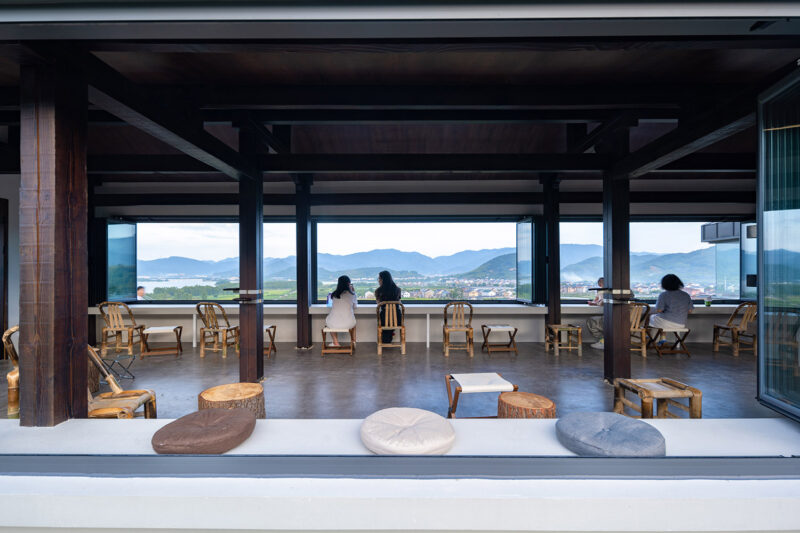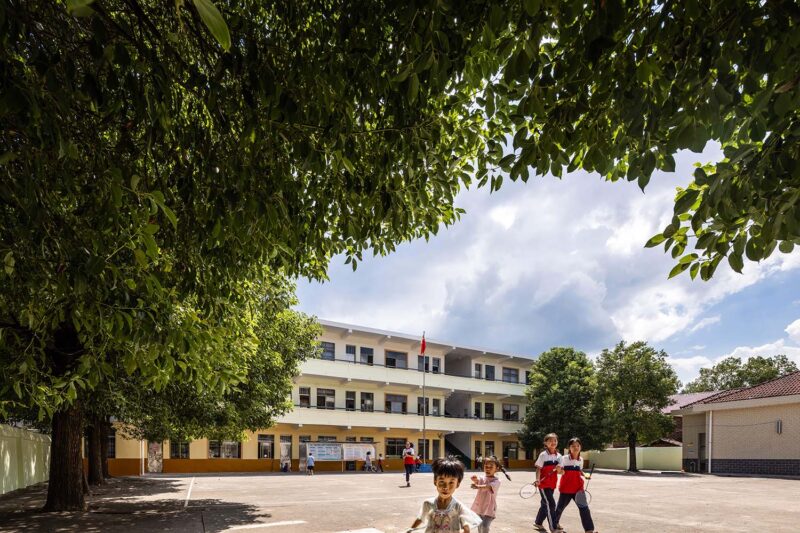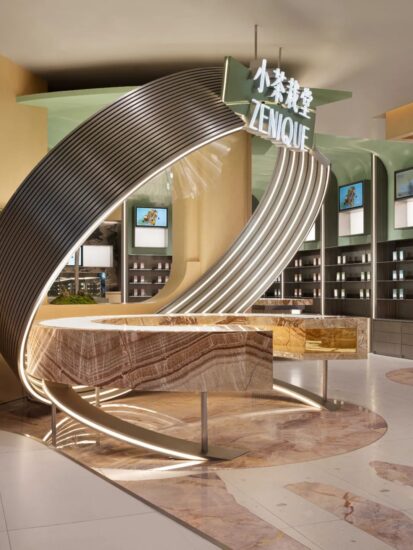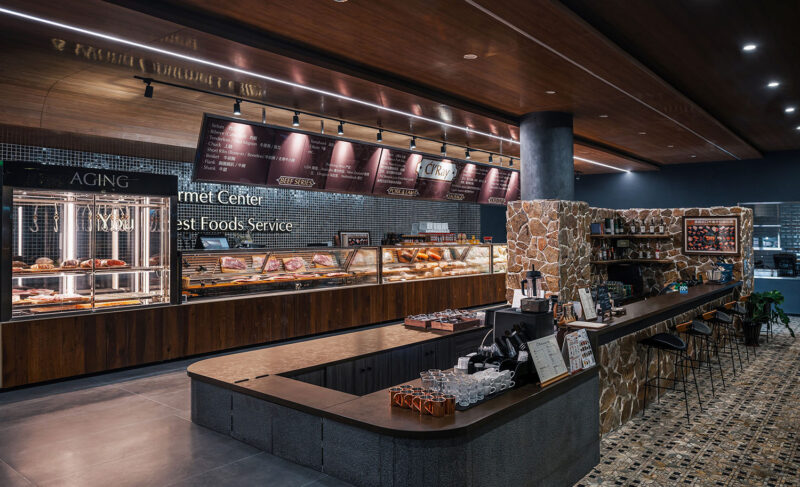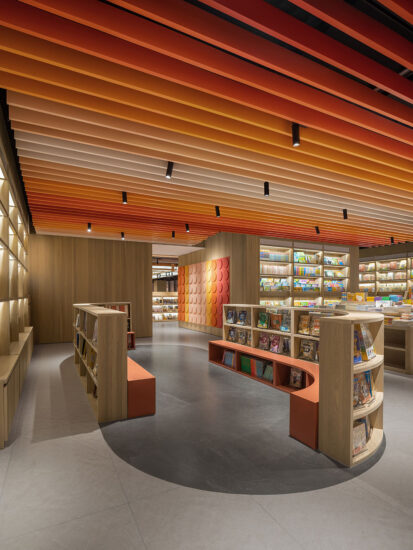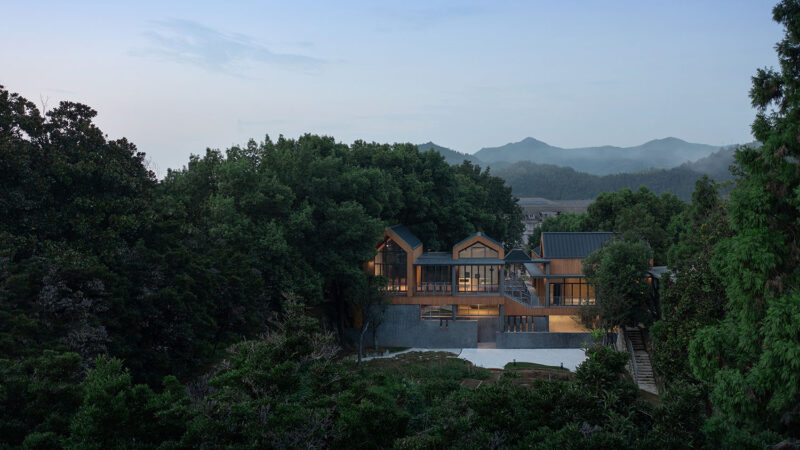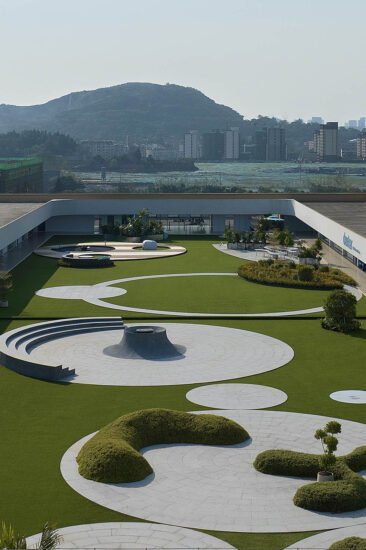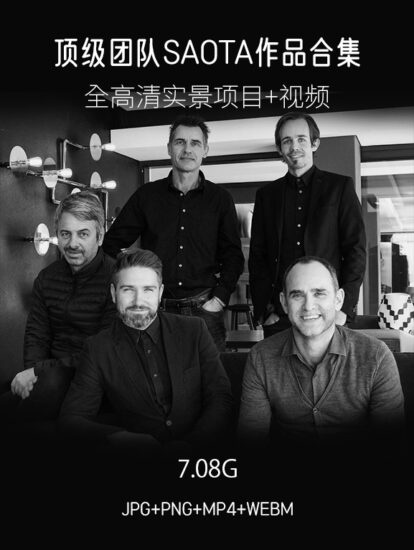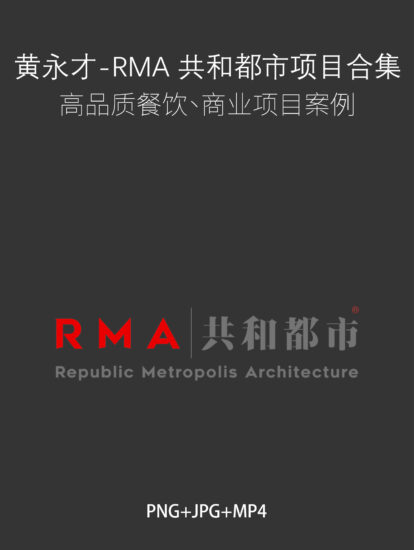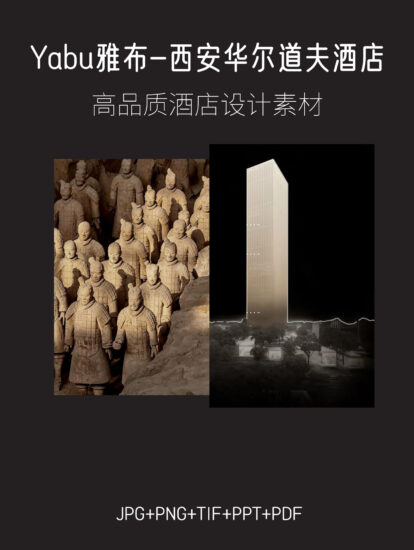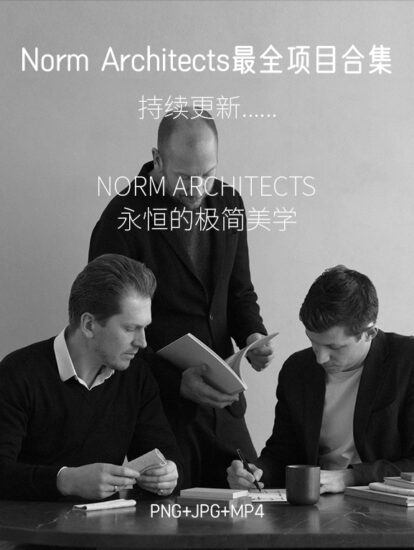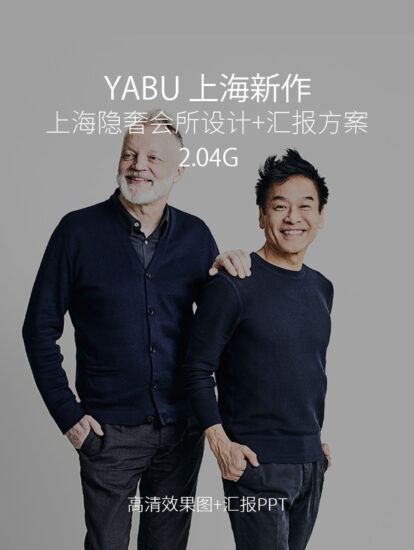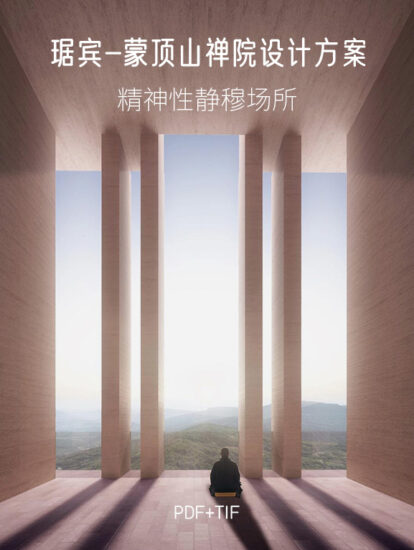“空間的設計,它所承載的是文化、文明以及所要應對的環境因素。” ——馬裏奧.貝裏尼
The design of the space, it carries the culture, civilization and the corresponding environmental factors.——Mario Bellini
東太湖慧客廳位於江蘇省蘇州市吳江東太湖生態旅遊度假區,本次項目在不改變原有建築牆體的前提下,結合地方特色,圍繞東太湖、黨建文化加強文化主題規劃設計,打造出了一個時尚、智慧、動感的新型特色文化空間。
East Tai Lake “Hui” Living Room is Located in the East Tai Lake Ecological Tourism Resort in Wujiang, Suzhou, Jiangsu Province. The project combines local characteristics without changing the original building walls and strengthens the cultural theme planning and design around East Tai Lake and Party Construction culture, creating a new characteristic cultural space that is stylish, intelligent and dynamic.
∇ 項目概覽,Project overview ©顏社視覺
如今人們已習慣了快節奏生活與碎片化閱讀,這導致傳統閱讀空間被大幅壓縮。以“聽見東太湖”為主題的有聲故事庫在線上為人們種草太湖的景觀文化,找回那段失去的閑散時光,東太湖慧客廳則仿佛是一個線下窗口,與有聲故事一同為人們展現東太湖。場地的左側是一個充滿現代科技感的展廳,一個大型沙盤將展廳與慧客廳相隔,科技帶來的冰冷質感與文化故事的溫暖氛圍也在整個空間中完美融合。
Nowadays, people are used to a fast-paced life and fragmented reading, which has led to a significant reduction in traditional reading space. The audio story library with “Hearing East Tai Lake” is an online platform for people to learn about the landscape and culture of Tai Lake and retrieve the lost leisure time. East Tai Lake “Hui” Living Room is like an onsite window, showing people the East Tai Lake together with audio stories. On the left side of the site is an exhibition hall full of modern technology. A large sand table separates the exhibition hall from the “Hui” Living Room. The cold texture of technology and the warm atmosphere of cultural stories are perfectly blended in the whole space.
∇“有聲東太湖”線下體驗,”Sound East Taihu Lake” offline experience ©顏社視覺
∇ 入口有聲地圖導覽,Entrance audio map guide ©顏社視覺
∇ 休閑體驗區(右),Leisure experience area ©顏社視覺
東太湖慧客廳整體風格以原木色為主,聲音流淌在木質紋路中,給人以溫暖、舒適的感覺。慧客廳的設計靈感則來源於太湖景區的代表元素:太湖水麵泛起的漣漪與聲波十分相似,我們從中提取了圓形元素;而湖灣的整體外形又與水流的形態十分相似,我們從中提取了流動的概念,層層圓形與流動的線條相結合生成了整個展廳的空間。
The overall style of the East Tai Lake “Hui” Living Room is mainly in log color and the sound flows in the wood grain, giving people a warm and comfortable feeling. The design of the “Hui” Living Room is inspired by the representative elements of the Tai Lake scenery: the ripples in the water of Tai Lake are similar to sound waves, from which we extracted the element of circle. The overall shape of the lake bay is similar to the form of water flow, from which we extracted the concept of flow. The combination of layers of circles and flowing lines generates the entire space of the exhibition hall.
∇ 從內側看向文創區,View from the inside to the Cultural and Creative District ©顏社視覺
在實際展廳中,圓形部分對應是一個聲創小劇場,配置一塊活動大屏區,相對封閉;而劇場外部的主廳囊括了入口吧台、文創展示台、休閑區及有聲圖書館幾個分區,設計團隊采用化零為整的方法,改變之前空間被不同設計語言打散的情況,用統一的流線形態劃分不同區域。
In the actual exhibition hall, the circular part corresponds to a small sound creation theatre, equipped with a large movable screen area, which is relatively closed. While the main hall outside the theatre includes an entrance bar, a cultural creation showcase, a relaxation area and an audio library. The design team adopt the method of turning fragments into whole, changing the previous situation where the space was broken up by different design languages, and dividing the different areas with a unified flowing form.
∇ 統一的流線形態劃分不同區域,Unified streamline shape divides different areas ©顏社視覺
展廳入口處的吧台設有漣漪形格柵來適應建築的斜立麵,在增強視覺效果的同時也具備了展品陳列功能,吧台一側放置有手繪地圖和座椅。
The bar at the entrance of the exhibition hall has a ripple grille to suit the sloping façade of the building, which enhances the visual effect and also serves as a display function. Hand-painted maps and seats are placed on one side of the bar.
∇ 漣漪形格柵吧台,Ripple grill bar ©顏社視覺
水流的元素貫穿了主廳的整體設計。設計師采用水流的形態將整個空間包覆,所有牆體都由漣漪型的格柵構成,在視覺方麵讓遊客們感受到回蕩在整個空間內的聲音。除此之外,富有流動感的牆麵容納了“聲音明信片”、“聲音檔案館”、“聲音工作坊”等功能,靠窗一側的“耳機森林”、“文創展示”及“休閑座椅”等空間也是依據相同的理念設計而成。展廳內的座椅與展台也都依托水流形態延伸而成,與牆麵風格統一。配合被展出的有聲文創與定製產品,東太湖的特色被滲透在每個細節之處,通過聲音與空間傳遞給遊客。
The element of water flows throughout the design of the main hall. The designers use the form of water flows to wrap the space, with all walls made up of rippling grilles. The visual aspect allows visitors to experience the sounds echoing throughout the space. In addition, the flowing walls house functions such as ‘sound postcards’, ‘sound archives’ and ‘sound workshops’. The “headphone forest”, “cultural and creative exhibition” and “leisure seating” on the side of the window are also designed according to the same concept. The seating and booths in the exhibition hall also follow the form of the water flow and are in harmony with the walls. Together with the audiovisual creations and bespoke products on display, the characteristics of East Tai Lake are permeated in every detail and conveyed to visitors through sound and space.
∇ 從內側看向入口,View from the inside to the entrance©顏社視覺
∇ 聽讀區細節,Listening and reading area details ©顏社視覺
∇ 聲音明信片,Sound postcard ©顏社視覺
主廳內設有幾個獨立的多功能中島,主中島可同時用作座椅、桌麵及展陳使用。在常規布置模式下,三個中島分別為三個展台;撤去展品後,活動模式下中島可作為桌麵供遊客使用。
The main hall has several separate multi-purpose tables, which can be used for seating, tabletop and display at the same time. The three tables serve as three booths in the conventional arrangement. When the exhibits are removed, the tables can be used as table tops for visitors in the active mode.
∇ 多功能中島區,Multi-functional island area ©顏社視覺
圓形的聲創小劇場整體設計風格也與展廳相近,漣漪的形態覆蓋整個空間,形成可容納多人的階梯,用於後期作為喜馬拉雅係列IP分享活動時作為來賓們的互動交流區。地麵上的圓環仿佛象征著演講者與聽眾之間思想的電波碰撞,在劇場內激起層層漣漪。屋頂的燈飾與此相呼應,不鏽鋼頂麵仿佛水麵,倒映著整個劇場。小劇場外部分割出一個小型直播空間,以玻璃隔間的形式鑲嵌在流動的牆麵中,隔絕外部聲音,滿足對直播活動的需求。
The overall design of the circular Sound Creation Theatre is similar to that of the exhibition hall. The ripple pattern covers the entire space, forming a staircase that can accommodate many people, which will be used as an interactive communication area for guests in the later Himalaya series IP sharing activities. The circles on the floor seem to symbolize the collision of ideas between the speaker and the audience, sending ripples through the theatre. This is echoed by the lighting on the roof. The stainless steel roof is like water, reflecting the entire theater. The exterior of the small theatre is divided into a small live space in the form of a glass compartment set into the flowing wall, isolating the outside sound and meeting the demand for live events.
∇ 入口處看向聲創小劇場,Looking at the Sound Creation Theater from the entrance ©顏社視覺
∇ 正麵看向聲創小劇場,Looking from the front to the Acoustic Small Theater ©顏社視覺
∇ 從內側看向聲創小劇場,Looking from the inside to the Sound Creation Theater ©顏社視覺
∇ 有聲圖書館及朗讀亭,Audio library and reading booth ©顏社視覺
東太湖慧客廳的建成,為太湖景區增添聲音的溫度,也為悠久的太湖文化注入了新的活力。希望更多人可以在這裏聽見東太湖,聽見時尚,聽見智慧,聽見運動。
The completion of the East Tai Lake “Hui” Living Room will add the warmth of sound to the scenic area of Tai Lake and inject new vitality into the long-standing culture of Tai Lake. The design team hope more people can hear East Tai Lake, fashion, wisdom and sports here.
∇ 爆炸分析圖,Explosion analysis diagram ©平介設計
∇ 平麵布置圖,Layout plan ©平介設計
項目信息
項目名稱:東太湖喜馬拉雅有聲書屋
設計年份:2021.08-2022.12
設計團隊:肖明峰,陳磊,楊楠, 孔祥鵬
項目地址:江蘇省蘇州市吳江區東太湖大道三區
建築麵積:300㎡
空間攝影:顏社視覺
Project Name: East Tai Lake Himalayan Audio Bookstore
Design Year: 2021.08 – 2022.12
Design Team: Mingfeng Xiao, Lei Chen, Nan Yang, Xiangpeng Kong
Project location: Zone 3, East Tai Lake Avenue, Wujiang District, Suzhou, Jiangsu Province
Gross built area: 300m2
Space photography: Yanshe Vision


